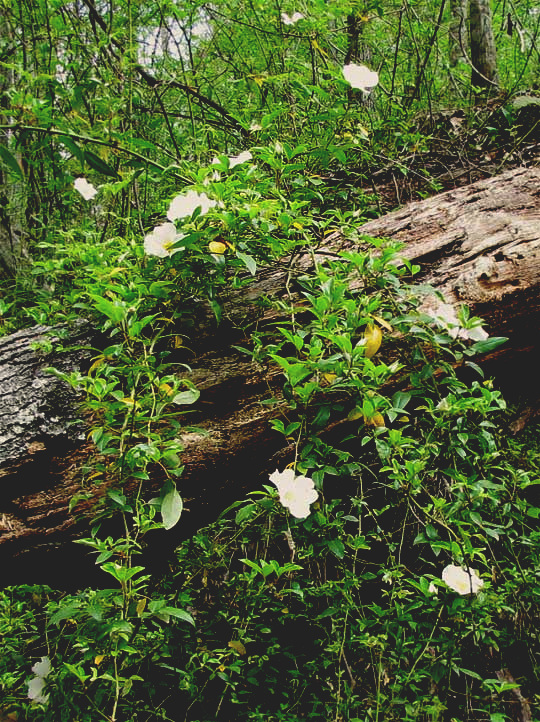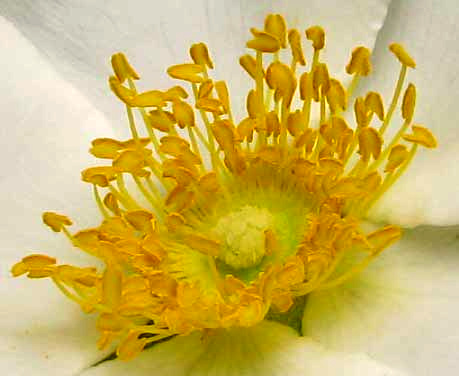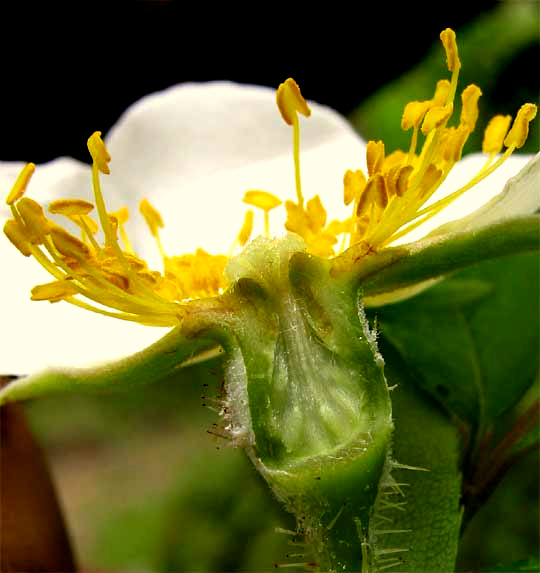Excerpts from Jim Conrad's
Naturalist Newsletter
from the March 30, 2009 Newsletter, issued from the forest near Natchez, Mississippi; elevation ~400ft (120m), ~N31.47°, ~W91.29°:
RAMPANT CHEROKEE ROSES
This has been the week when the forest turned dark green. Redbuds are past but dogwoods were at their peak and the azaleas were simply intoxicating with their colors. Northern Parulas, Hooded Warblers and White-eyed and Yellow-throated Vireos are calling. Spring is rampaging.
A plant rampantly in full bloom now is the Cherokee Rose, ROSA LAEVIGATA, seen along highways, around older homes and out in the woods climbing thirty feet and more into trees, then cascading down with shiny, evergreen leaves and white roses over three inches across. See a little one down in the bayou below:

The vine in that picture clambering over a decaying tree trunk fallen across the bayou couldn't seem more like a natural part of the vegetation, right? The funny thing is -- even though the first Cherokee Roses known to science were collected here and described as American plants -- the species is native to China and Japan. It was brought to the US Southeast so early in history that it has settled in like a native.

Above you see inside a Cherokee Rose blossom -- male, yellow stamens surrounding a much paler, cauliflower-like thing in the center. The cauliflower-thing becomes more understandable when you see the cross section below:

In recent newsletters we've referred to the cuplike hypanthium typical of many Rose Family blossoms. Calyx sepals, corolla petals and male stamens arise from the lip of the cuplike hypanthium, while the female pistil or pistils nestle in the hypanthium's bottom.
Remember that plums are members of the Rose Family and we've seen that their flowers also have hypanthia. A huge difference between a plum flower and rose flower, however, is that plum flowers have just one pistil (comprising the stigma, style and ovary) while inside the hypanthium of each rose flower several pistils arise. In the above picture you can see several oval ovaries at the hypanthium's bottom. Atop each ovary a silvery, threadlike style grows upward, passes through a constriction where the hypanthium's rim is almost closed, and then each style's terminal stigma is packed with other stigmas at the opening, together looking like a stopper or a little cauliflower. Rose blossom anatomy is described in more detail on my rose page at http://www.backyardnature.net/fl_roses.htm.